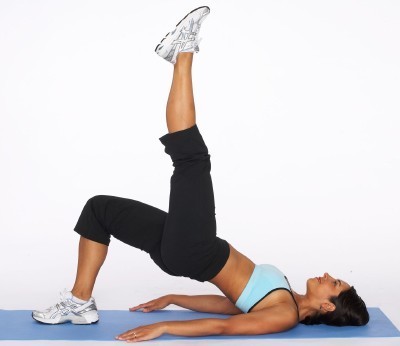
Psoas pronounced as “SO AS” may be the most overlooked muscle in back pain. The psoas muscle is a strong hip flexor, which blends with the illiacus to form the illiopsoas as it attaches to the inner part of the femur.
Most Americans spent a great portion of their day in a seated position either working at a computer, sitting in a classroom or at a desk in a meeting. Due to poor posturing, excessive sitting, poor flexibility and core weakness causes the psoas muscle to shorten and become fibrotic and weak. This tightness pulls the lower back forward into a hyperlordotic position or excessively arched position. From here, the body is at a disadvantage and will limit hip extension and cause compensations throughout the body. The final result is increased compressive forces through the lumbar spine, otherwise known as lower back pain.
For example, just look at a personâ??s belt line from the side. Does the line point forward and down? If so, itâ??s most likely the tight psoas is the culprit. So as the spine becomes more hyperlordotic, it shortens the lower back muscles or the paraspinals causing them to become shortened and weak. Many of my patients who suffer lower back pain report increased pain after getting up from a seated position or excessive sitting. Although there may be many reasons for this, a major one is that the psoas is in a very short position and then you stand quickly which lengthens the muscles causing it to reflexively contract causing back pain. Many patients with tight hip flexors believe they have tight hamstrings which cause lower back pain. This is a common misconception. When the psoas is shortened it pulls the pelvis down as shown in the image above. This overlengthens the hamstrings similar to a pulley system. This can set a patient up for a hamstring strain as well because the hamstrings are asked to do their job from a weakened stretched out position.
“Psoas and the Nervous System”
Three peripheral nerves feed through the psoas including the femoral, genitofemoral and lateral femoral cutaneous nerve. Each of these nerves can become compressed or entrapped causing symptoms in the groin, inner and outer thigh.
3 steps to decrease incidence of psoas injury and prevent/reduce lower back injury.
Before sport or exercise activity
-
Myofascial release the psoas and quad with tennis ball/lacrosse ball or foam roll.
-
Actively Stretch your hip flexor/ quad
-
Activate the antagonist. In order for a muscle to shorten or flex, the opposite muscle needs to relax. This process is reciprical inhibition. By activating the gluteus maximus, the psoas muscle needs to shut down and relax.
All exercises are pre workout.
My favorite glute activation exercise is a single leg bridge
-
Begin on your back with one knee bent and other leg lifted in the air as in the image.
-
Push through your heel and squeeze your butt as you lift your hips up as shown in the image
Welcome to the road of recoveryâ?¦